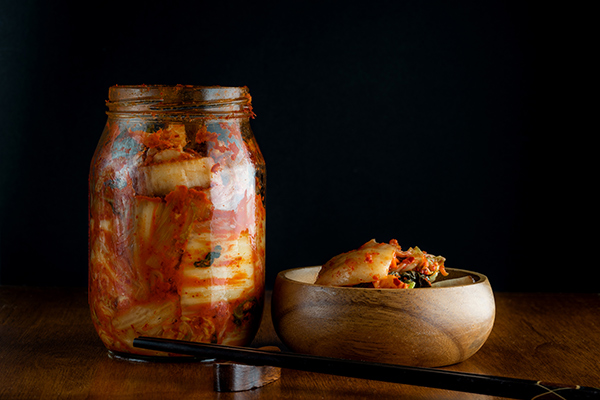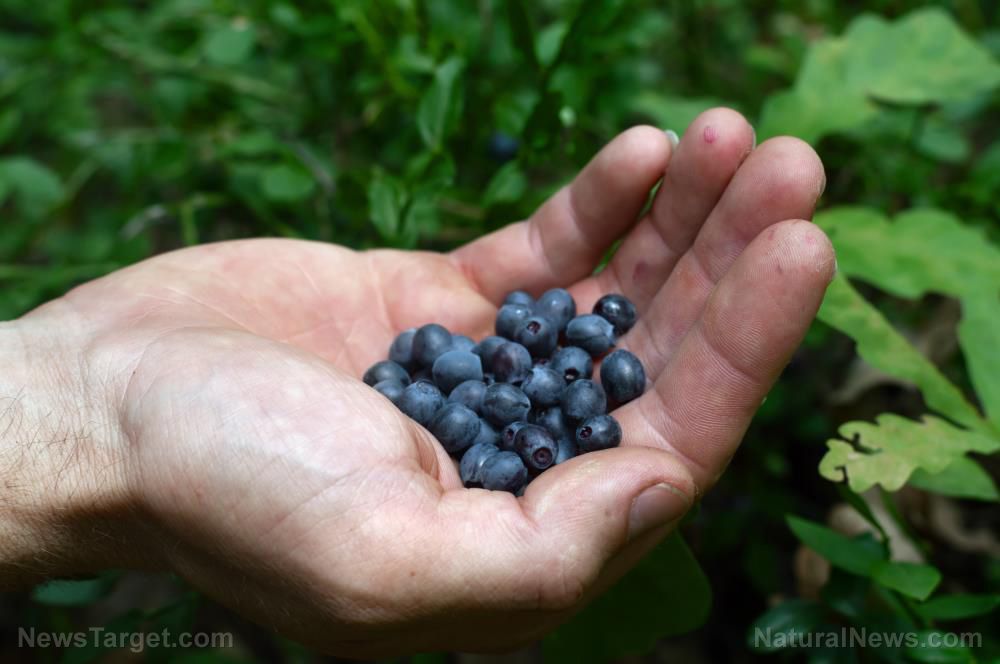
Advertisement
Nothing says Korea than kimchi: Think of how rice is a staple in China, or noodles a staple in Japan. Likewise, Korea is never without its quintessential fermented cabbage dish.
So what’s in those pungent cabbage strips that make them such an integral component of Korean cuisine? For starters, kimchi is rooted in tradition. Koreans used to create fermented dishes like kimchi to weather out the cold winter months when nothing could grow.
Made with cabbage, garlic, chili and other spices, kimchi is also teeming with nutrients and antioxidants, including folate, iron and B complex vitamins. You can now also make kimchi from radish, eggplant and bamboo shoots, among others, for a healthier twist.
The many health benefits of kimchi
More than being a delectable dish, kimchi boasts a long list of science-backed health benefits to its name. Listed below are some of the most common ones.
- Promotes digestion – The lacto-fermentation process that “makes” the kimchi uses the bacterium Lactobacillus to break down sugars into lactic acid. This results in kimchi’s distinct sour taste. The process of fermentation also creates other beneficial microbes, called probiotics, which promote digestion and regulate bowel movement.
- Supports weight loss – Kimchi can be a healthy addition to a weight loss diet. Studies show that the Lactobacillus bacteria in kimchi help to burn abdominal fat and reduce total fat. The fiber from the cabbage can also sustain feelings of fullness for longer periods, thus discouraging overeating and snacking in between meals.
- Regulates cholesterol – Recent human studies and animal-based research found that eating kimchi can lead to significant reductions in total cholesterol and bad cholesterol, which can end up clogging arteries. Garlic, one of the main ingredients used to make kimchi, is also rich in selenium and allicin. These compounds are known to lower cholesterol.
- Fights oxidative stress – Kimchi is chock-full of antioxidants, all thanks to the ingredients used to make it. These antioxidants help fight oxidative stress and inflammation that could lead to chronic conditions like heart disease.
- Eases atopic dermatitis – Recent studies suggest that Lactobacillus bacteria can also reduce inflammation implicated in atopic dermatitis, a skin condition that causes rashes and lesions.
- Fortifies immune health – Superfoods used to make kimchi, such as ginger, garlic and peppers, contain immune-boosting nutrients and potent plant compounds that help fight infections like the common cold and the flu.
- Slows the aging process – It isn’t all that uncommon for Koreans to look younger than their actual age. Studies suggest that their secret to looking youthful might lie in kimchi. That’s because the antioxidants in kimchi can protect cells from stress and inflammation, which trigger aging.
- Reduces gastric ulcers – Besides promoting digestion and preventing unwanted weight gain, probiotics in kimchi also help strengthen the intestine against harmful bacteria that cause ulcers.
- Reduces cancer risk – Emerging research has also touted kimchi as possessing anti-cancer properties thanks to its antioxidants and beneficial plant compounds. Cabbage, for instance, contains powerful cancer-fighting compounds called glucosinolates. Studies show that glucosinolates help eliminate potential carcinogens and inhibit cancer cell growth.
- Lowers blood sugar – Like most fermented foods, kimchi is thought to be beneficial for prediabetics and diabetics. Experts attribute this anti-diabetic effect to the fibers in kimchi, which help inhibit the absorption of sugar in the gut. Some studies also show that probiotics can help in regulating blood glucose.
Making kimchi and kimchi dishes
Kimchi can be eaten on its own or cooked with proteins, greens and whole grains for a filling dish. It also makes for a probiotic-rich side dish to help those good gut bacteria digest food better. Listed below is an authentic recipe for Korean kimchi, as well as some other recipes that make good use of kimchi:
Traditional kimchi
It doesn’t get more authentic than this. Made with napa cabbage, daikon radish and scallions, this is as Korean as homemade kimchi can get. Follow this recipe to a T to ensure proper fermentation.
Ingredients:
- 8 oz. Korean or daikon radish
- 4 medium scallions, trimmed and cut into one-inch pieces
- 1 medium head napa cabbage
- 1/4 cup kosher salt
- 5 tablespoons Korean red pepper flakes (adjust according to spice preference)
- 2 tablespoons fish sauce or salted shrimp paste
- 1 tablespoon grated garlic
- 1 teaspoon grated ginger
- 1 teaspoon granulated sugar
- Distilled or filtered water
Preparation:
- Cut the cabbage lengthwise into quarters through the stem. Cut the cores from each piece, then cut each quarter crosswise into 2-inch-wide strips.
- In a large bowl, place the cabbage and sprinkle it with salt. Massage the salt into the cabbage until it starts to soften.
- Pour in enough water to cover the cabbage strips, then place a plate or a bowl on top of the strips to keep them submerged for 1 to 2 hours.
- Rinse the cabbage strips under cold water thrice. Set them aside to drain in a colander for 15–20 minutes.
- In the same bowl used for salting the cabbages, add the garlic, ginger, sugar and fish sauce or shrimp paste. Stir to make a smooth paste.
- Stir in the Korean red pepper flakes. Set aside.
- Squeeze the remaining water from the cabbage and add it to the bowl with the spice paste.
- Toss in the radish and scallions, then work the paste into the vegetables.
- Pack the prepared kimchi into a 1-quart jar. Press down on the kimchi to squeeze out the brine.
- Keep pressing down until there is enough brine to cover the vegetables.
- Leave at least an inch of headspace, then seal the jar.
- Let it ferment for up to two weeks in the refrigerator.
Kimchi dumplings
Do you have kimchi fermenting in the fridge? Take some out to make some delicious kimchi dumplings! Just combine kimchi and minced pork or beef and wrap them up for steaming.
Ingredients:
- 25 dumpling wrappers
- 7 oz. mung bean sprouts, parboiled and chopped
- 4.6 oz. minced pork or beef
- 0.3 oz. chopped garlic chives
- 1 1/2 cups kimchi
- 1 egg
- 1/2 onion, chopped
- 1 teaspoon fine sea salt
- 1 teaspoon sesame oil
- 1/2 teaspoon minced garlic
- Ground black pepper
- Water
Preparation:
- To create the filling, combine the kimchi, bean sprouts, minced meat, onion, garlic, chives, egg, sesame oil, salt and pepper in a mixing bowl.
- Spread a dumpling wrapper on the counter and place a spoonful of filling in the center.
- Wet the edge of the wrapper with water, then seal it up.
- Repeat this with the rest of the wrappers and filling.
- Steam the dumplings and serve as-is or with dipping sauce.
Kimchi pancake
Yes, it’s possible to make pancakes out of kimchi, albeit the flatter and spicier kind. This recipe is also great for using up the last couple of kimchi strips from an old batch.
Ingredients:
- 2 1/2 cups all-purpose flour
- 2 1/2 cups water
- 2 cups kimchi
- 1 tablespoon kimchi brine
- 1/2 teaspoon fine sea salt
- 5 ice cubes
- 2 green chili (optional)
- 1 large egg
- Rice bran oil
Preparation:
- In a large bowl, sieve the flour and the salt. Pour in the water and whisk it well.
- In a separate bowl, beat the egg, then pour it into the flour and salt mixture.
- Pour in the kimchi liquid, and add the kimchi and green chili. Mix well.
- Toss in the ice cubes to keep the batter cold.
- Heat a pan, then pour in the oil. Swirl it around to coat the pan.
- Using a ladle, scoop out the pancake mixture and pour it onto the pan.
- Cook the pancake on high heat for 10–20 seconds, then reduce the heat to low.
- Flip the pancake once about 2/3 of it is cooked.
- You can slice it into bite-sized pieces before serving.
Garlic kimchi pizza
This stone-baked kimchi pizza is a delightful Korean fusion dish that’s sure to wow guests and get the kids to eat their probiotics. It also isn’t all that difficult to do, even for those with no experience making pizzas.
Ingredients:
- 1 whole-wheat pizza dough
- 2 tablespoons chopped kimchi
- 2 teaspoons extra-virgin olive oil
- 1/2 teaspoon dried parsley
- 1/4 teaspoon minced garlic
- 1/8 teaspoon sugar
Preparation:
- Preheat a pizza stone in the oven for 20 minutes at 464 F.
- In a small bowl, combine the olive oil, sugar, minced garlic and parsley.
- Brush this mixture onto the pizza base, then sprinkle it with the chopped kimchi.
- Place the pizza on the stone and bake it for 7 minutes or until the crust begins to brown.
- Slice as preferred and serve.
Rich in fiber, probiotics and other beneficial nutrients, kimchi is one superfood to beat. To reap kimchi’s incredible health benefits, pair it with proteins and greens or whip up the recipes listed above.
Sources:
Advertisements







